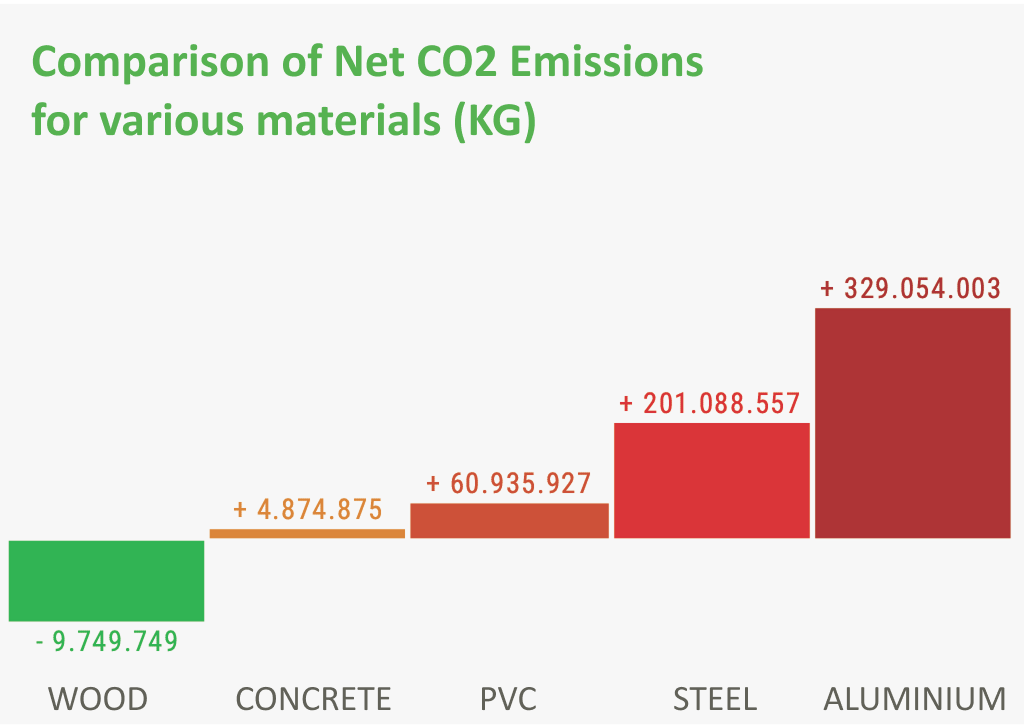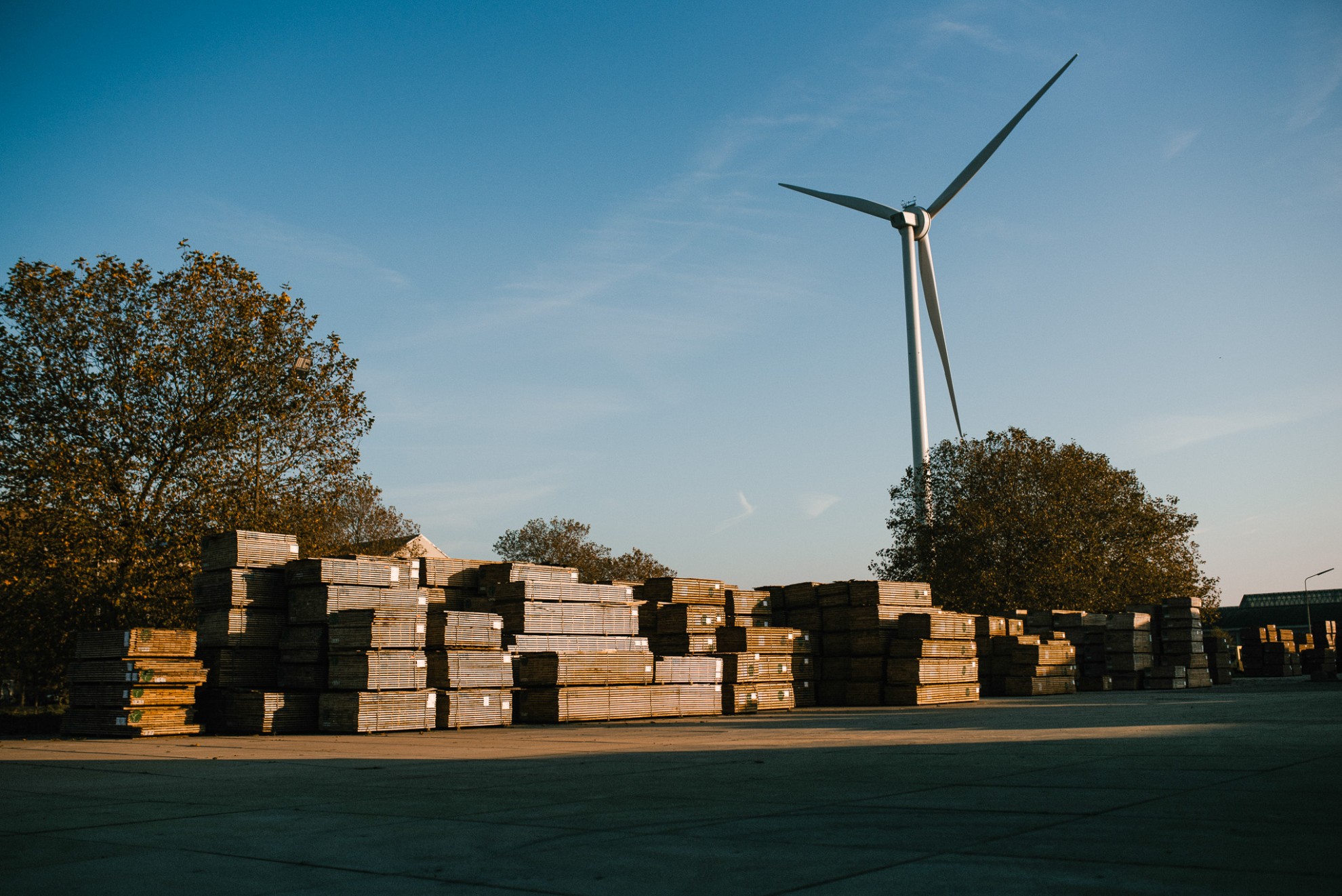Did you know that wood as a building material contributes to a better climate by storing CO₂? During growth, trees absorb CO₂ from the air and store it in their roots, leaves, and wood. That stored CO₂ remains preserved even after the wood is processed into building material.
At Platowood, we believe that wood is more than an aesthetic choice: it’s also a way to actively contribute to a more sustainable future. That’s why we’re happy to explain how CO₂ storage in wood actually works.
How does wood store CO₂?
During their growth, trees absorb CO₂ from the air through photosynthesis. In doing so, they convert carbon dioxide into oxygen and sugars. These sugars are then used as building blocks for the tree itself — think of the wood, bark, roots, and leaves. In this way, the carbon from CO₂ is locked into the structure of the tree.
When that wood is harvested and used, for example, in façades or interior applications, the CO₂ remains stored for as long as the wood lasts. And that can be decades, especially with durable wood like that of Platowood.
To make that climate benefit measurable, Platowood uses the Centrum Hout calculation module. This independent methodology provides insight into how much CO₂ is stored in wood products.

Source: Centrum Hout Calculation Module
In the past year, Platowood stored nearly 10 million kilos of CO₂ in products made of Fraké, Spruce, and Poplar. That equals the average annual electricity consumption of over 10,800 Dutch households.
For illustration: European forests absorb that same amount of CO₂ in just 720 seconds.
What are the benefits of CO₂ storage in wood?
One of the greatest advantages of wood as a building material is that it can store CO₂ for a long time. Especially when the wood, like at Platowood, is hydro-thermally modified — a process that uses only water and heat. This makes the wood sustainably preserved without chemical additives and gives it a much longer lifespan.
The longer wood lasts, the longer the previously captured CO₂ also remains stored.
But it goes beyond that. Sustainability is not just about material use, but also about the broader economic, ecological, and social impact a company makes.
Moreover, wood is highly suitable for circular reuse. By reusing wood in new construction projects, the stored CO₂ remains captured time and again — and the climate benefit is further extended.
What happens to the CO₂ at the end of the wood's lifespan?
At the end of the wood’s lifespan — for example, when it decays or is burned — the stored CO₂ is released again. However, this is part of the natural carbon cycle: new trees absorb this CO₂ again as they grow.
At Platowood, wood lasts at least 25 years, meaning the CO₂ remains safely stored throughout that entire period. In that same timeframe, a mature tree will have grown back, ready to be harvested again for applications such as cladding.
The longer wood lasts, the more time nature has to absorb new CO₂. And that’s what makes sustainable wood applications so valuable: you not only extend storage but also give the forest a chance to keep growing with the climate.
Would you also like to build a sustainable future with wood that truly makes an impact? Then contact us and discover what Platowood can mean for your project.
